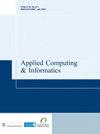直到你失去一些东西!损失规避和双因素认证采用
IF 4.9
Q1 COMPUTER SCIENCE, INFORMATION SYSTEMS
引用次数: 9
摘要
目的在这项研究中,作者试图了解自然影响用户采用双因素身份验证(2FA)的因素,甚至不试图通过调查个人内部可能影响他们自己采用2FA的因素来进行干预。设计/方法/方法来自印度尼西亚34个省的1852人通过填写在线问卷参与了这项研究。作者从损失厌恶理论的角度进一步讨论了统计分析的结果。研究结果作者发现,以更高的收入为代表的损失厌恶是2FA采用背后最重要的人口因素,这意味着失去东西会带来更大的潜在痛苦。相反,那些低收入背景的人,即使他们有大学学历,也更有可能跳过2FA,尽管他们知道这项技术。作者还发现,当涉及到基于身份验证的网络威胁时,老一辈,尤其是女性,是最脆弱的群体之一,因为他们不太可能采用2FA,甚至一开始就意识到它的存在。原创性/价值认证是网络安全中最重要的主题之一,与人机交互有关。虽然2FA提高了身份验证方法的安全级别,但它也需要额外的努力,这可能会给用户端带来一定程度的不便。通过从用户端识别相关因素,可以进行必要的干预,让更多的用户愿意加入2FA采用者的行列。本文章由计算机程序翻译,如有差异,请以英文原文为准。
Until you have something to lose! Loss aversion and two-factor authentication adoption
PurposeIn this study, the authors seek to understand factors that naturally influence users to adopt two-factor authentication (2FA) without even trying to intervene by investigating factors within individuals that may influence their decision to adopt 2FA by themselves.Design/methodology/approachA total of 1,852 individuals from all 34 provinces in Indonesia participated in this study by filling out online questionnaires. The authors discussed the results from statistical analysis further through the lens of the loss aversion theory.FindingsThe authors found that loss aversion, represented by higher income that translates to greater potential pain caused by losing things to be the most significant demographic factor behind 2FA adoption. On the contrary, those with a low-income background, even if they have some college degree, are more likely to skip 2FA despite their awareness of this technology. The authors also found that the older generation, particularly females, to be among the most vulnerable groups when it comes to authentication-based cyber threats as they are much less likely to adopt 2FA, or even to be aware of its existence in the first place.Originality/valueAuthentication is one of the most important topics in cybersecurity that is related to human-computer interaction. While 2FA increases the security level of authentication methods, it also requires extra efforts that can translate to some level of inconvenience on the user's end. By identifying the associated factors from the user's ends, a necessary intervention can be made so that more users are willing to jump on the 2FA adopters' train.
求助全文
通过发布文献求助,成功后即可免费获取论文全文。
去求助
来源期刊

Applied Computing and Informatics
Computer Science-Information Systems
CiteScore
12.20
自引率
0.00%
发文量
0
审稿时长
39 weeks
期刊介绍:
Applied Computing and Informatics aims to be timely in disseminating leading-edge knowledge to researchers, practitioners and academics whose interest is in the latest developments in applied computing and information systems concepts, strategies, practices, tools and technologies. In particular, the journal encourages research studies that have significant contributions to make to the continuous development and improvement of IT practices in the Kingdom of Saudi Arabia and other countries. By doing so, the journal attempts to bridge the gap between the academic and industrial community, and therefore, welcomes theoretically grounded, methodologically sound research studies that address various IT-related problems and innovations of an applied nature. The journal will serve as a forum for practitioners, researchers, managers and IT policy makers to share their knowledge and experience in the design, development, implementation, management and evaluation of various IT applications. Contributions may deal with, but are not limited to: • Internet and E-Commerce Architecture, Infrastructure, Models, Deployment Strategies and Methodologies. • E-Business and E-Government Adoption. • Mobile Commerce and their Applications. • Applied Telecommunication Networks. • Software Engineering Approaches, Methodologies, Techniques, and Tools. • Applied Data Mining and Warehousing. • Information Strategic Planning and Recourse Management. • Applied Wireless Computing. • Enterprise Resource Planning Systems. • IT Education. • Societal, Cultural, and Ethical Issues of IT. • Policy, Legal and Global Issues of IT. • Enterprise Database Technology.
 求助内容:
求助内容: 应助结果提醒方式:
应助结果提醒方式:


